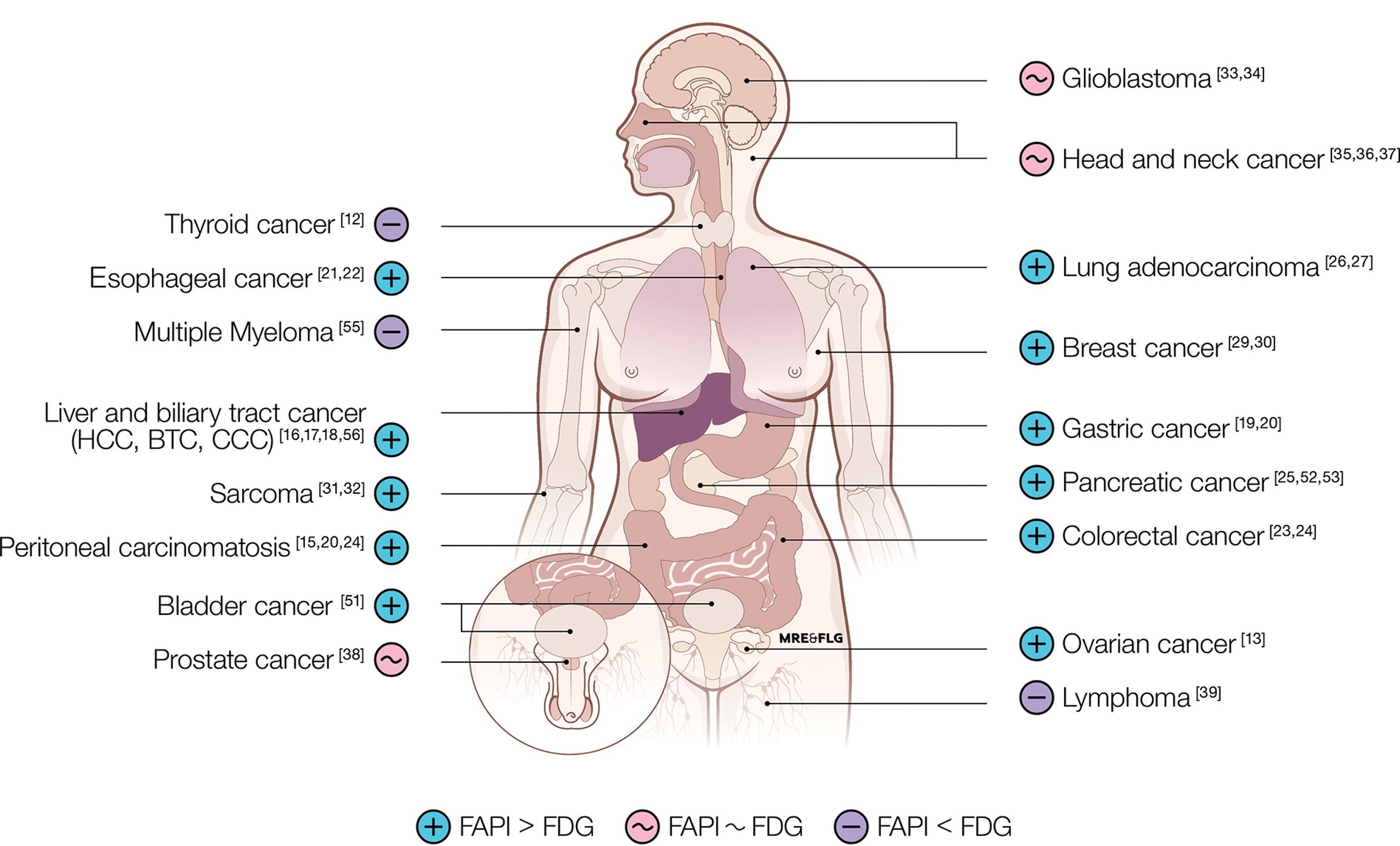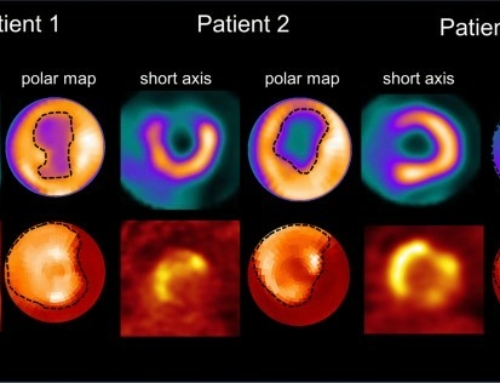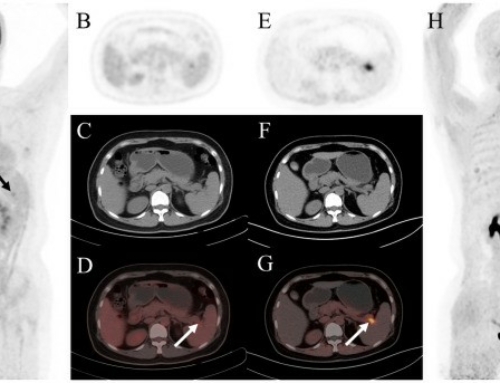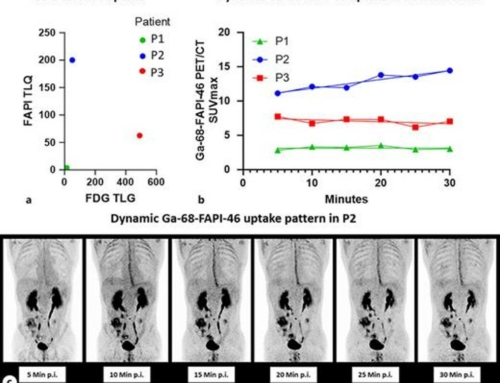Abstract
Gallium 68 (68Ga)-labeled fibroblast activation protein (FAP) inhibitor (FAPI) PET is based on the molecular targeting of the FAP, which is known to be highly expressed in the major cell population in tumor stroma, termed cancer-associated fibroblasts. Among many FAP-targeted radiopharmaceuticals developed so far, 68Ga-FAPI exhibits rapid tracer accumulation in target lesions and low background signal, which results in excellent imaging features. FAPI PET can be integrated in the clinical workflow and enables the detection of small primary or metastatic lesions, especially in the brain, liver, pancreas, and gastrointestinal tract due to the low tracer accumulation in these organs. Moreover, the DOTA (1,4,7,10-tetraazacylclododecane-1,4,7,10-tetrayl tetraacetic acid) chelator in the molecular structure allows coupling of the FAPI molecules with therapeutic emitters such as yttrium 90 for theranostic applications. This review provides an overview of the state of the art in FAP imaging, summarizes the current knowledge of relevant cancer biology, and highlights the latest findings in the clinical use of 68Ga-FAPI PET and other current FAPI tracers. Published under a CC BY 4.0 license.


![Efficacy of [68Ga]Ga-FAPI-PET as a non-invasive evaluation method of liver fibrosis](https://sofie.com/wp-content/uploads/2025/06/info.ibamolecular-500x383.png)
![Comparison of [99mTc]Tc-FAPI SPECT/CT and [18F]FDG PET/CT as predictive biomarkers for immunotherapy response in gastrointestinal cancer](https://sofie.com/wp-content/uploads/2025/06/info.ibamolecular-500x383.jpg)


